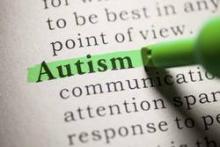Children with autism spectrum disorder (ASD) who participated in an early intervention program showed sustained improvement in adaptive behavior, challenging behavior, overall intellectual ability, and symptom severity at 2 years’ follow-up, according to a prospective study.
“These findings demonstrate how early identification and intensive, early ASD-specific intervention can improve long-term outcomes for children with ASD,” noted Dr. Annette Estes of the University of Washington Autism Center in Seattle and her colleagues (J. Am. Acad. Child Adolesc. Psychiatry 2015;54:580-7).
A prospective 2-year follow-up study was conducted involving 39 6-year-old children with ASD who participated in the randomized clinical trial of the Early Start Denver Model (ESDM). Participants were initially enrolled at 18-30 months and were randomized to intensive interventions at home (ESDM) or treatment-as-usual in the community (COM) for 2 years. The ESDM group was offered 2-hour intervention sessions twice per day, 5 days per week, for 2 years by therapists. The number of hours of therapist-delivered interventions did not differ significantly between the ESDM and COM groups.
Supervised doctoral students or a clinical psychologist who was not aware of the participant’s intervention status assessed the children. Parent questionnaires or interviews were obtained to assess peer relationships, challenging behavior, adaptive behavior, and repetitive behavior.
Two years after intervention, differences in intellectual functioning were not found to be significantly different between the ESDM and COM groups. After initial treatment, the researchers noted there were not differences in core autism symptoms. However, the ESDM group demonstrated improvement in adaptive behavior and core autism symptoms at the 2-year follow-up, compared with the COM group. Improvements in adaptive behavior, challenging behavior, overall intellectual ability, and symptom severity on average were sustained in the 2 years after ESDM.
Dr. Estes and her associates pointed out that the generalizability of the findings may be limited by the amount of intervention hours the COM group received, and suggested they may have had greater access to intervention than typical families. Furthermore, the mothers of the study subjects were more highly educated, compared with average U.S. women.
The researchers concluded, “This provides direct evidence that these children did not exhibit a developmental regression, lose skills, or, in the case of standardized tests, slow their rate of development after withdrawal of early intensive services.”
The study was supported by the National Institute of Mental Health and the National Institute of Child Health and Human Development. Dr. Estes reported multiple disclosures for grants and funding. Dr. Rogers and Dr. Dawson reported receiving royalties from books on early intervention they coauthored, and Dr. Rogers also reported receiving royalties, material fees, and honoraria related to the ESDM. The remaining coauthors reported no relevant financial disclosures.


